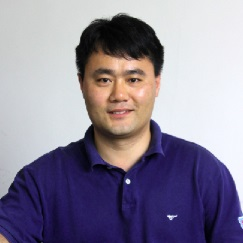Regulation and Action Mechanism of Marine Microorganisms in Ecosystem
A special issue of Journal of Marine Science and Engineering (ISSN 2077-1312). This special issue belongs to the section "Marine Ecology".
Deadline for manuscript submissions: closed (25 February 2023) | Viewed by 6707
Special Issue Editors
Interests: microbial communities and function; regulation mechanisms; ecological process; network interactions; matter cycles
Interests: viromics; algae-bacteria-phage interactions; aquatic viral ecology; phage therapy; microbially driven carbon cycle
Special Issues, Collections and Topics in MDPI journals
Special Issue Information
Dear Colleagues,
Microorganisms (algae, bacteria, archaea, fungi, and viruses) drive major biogeochemical cycles (C, N, P, S, Fe, etc.) and support higher food-webs globally; they are vital components of the marine ecosystem. However, the most important characteristic of microorganisms is that they do not work alone. Their function depends on group effects. A topic of concern is the elucidation of what drives these group effects. These include biological signals, chemical signals and environmental signals. In order to better understand the role of microorganisms in the marine ecosystem, it is necessary to know their behavioral processes and regulatory mechanisms.
This Special Issue focuses on the regulation mechanisms of microbial communities with regard to the marine ecosystem. We seek contributions from authors that include, but are not limited to, the following areas:
(1) The driver factors of microbial communities or functions affecting various marine ecosystems (mangrove, coral reefs, seagrass bed, and salt marshand).
(2) The roles of regulatory signals (such as quorum sensing, hormone, and metabolites, etc.) on microbial behavior (biofilm, mat, assemblage and succession).
(3) Microbial response to a rapidly changing marine environment or ecological events.
(4) Modeling of ecosystems-based actional data and microbiome regulation mechanisms-based multi-omic analyses.
(5) Microbial interactions and their effects on marine environments.
Dr. Jin Zhou
Prof. Dr. Yongyu Zhang
Guest Editors
Manuscript Submission Information
Manuscripts should be submitted online at www.mdpi.com by registering and logging in to this website. Once you are registered, click here to go to the submission form. Manuscripts can be submitted until the deadline. All submissions that pass pre-check are peer-reviewed. Accepted papers will be published continuously in the journal (as soon as accepted) and will be listed together on the special issue website. Research articles, review articles as well as short communications are invited. For planned papers, a title and short abstract (about 100 words) can be sent to the Editorial Office for announcement on this website.
Submitted manuscripts should not have been published previously, nor be under consideration for publication elsewhere (except conference proceedings papers). All manuscripts are thoroughly refereed through a single-blind peer-review process. A guide for authors and other relevant information for submission of manuscripts is available on the Instructions for Authors page. Journal of Marine Science and Engineering is an international peer-reviewed open access monthly journal published by MDPI.
Please visit the Instructions for Authors page before submitting a manuscript. The Article Processing Charge (APC) for publication in this open access journal is 2600 CHF (Swiss Francs). Submitted papers should be well formatted and use good English. Authors may use MDPI's English editing service prior to publication or during author revisions.






